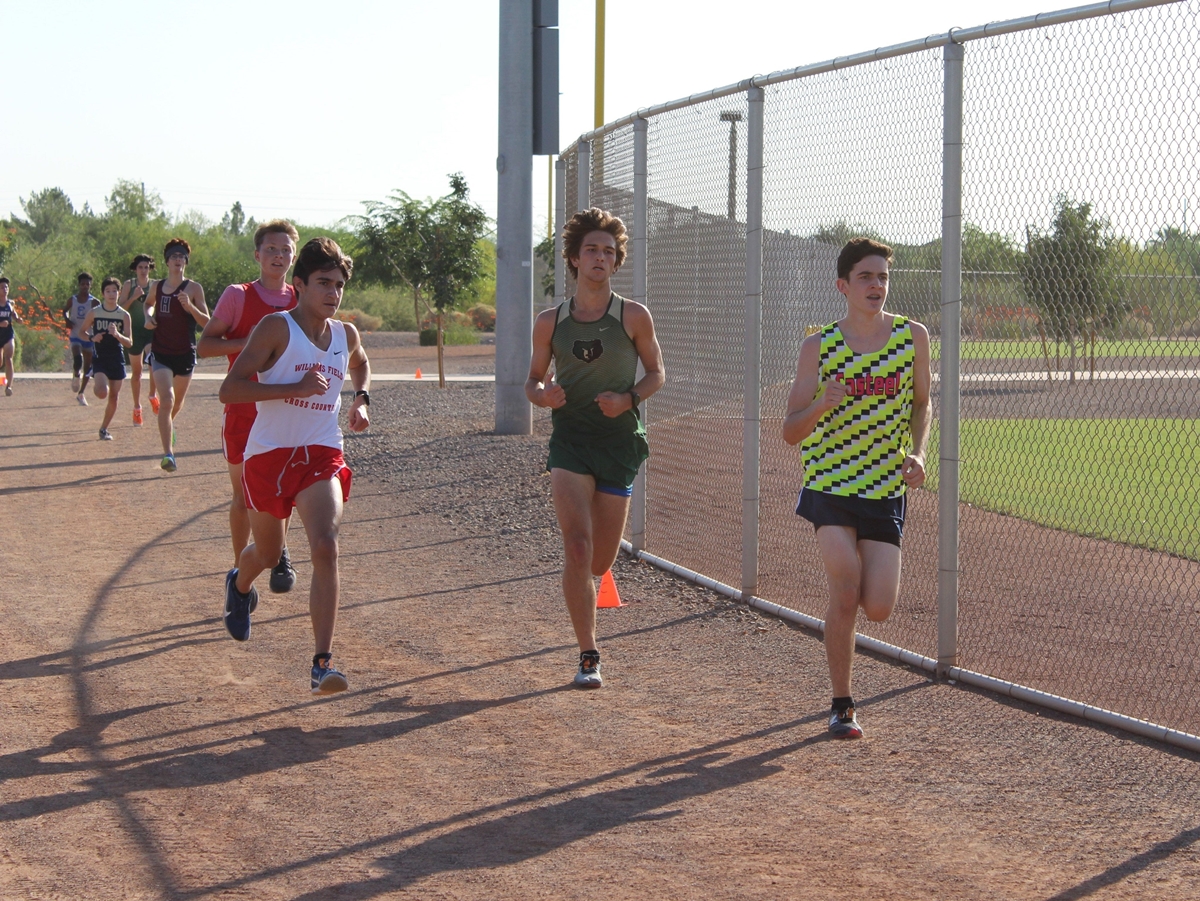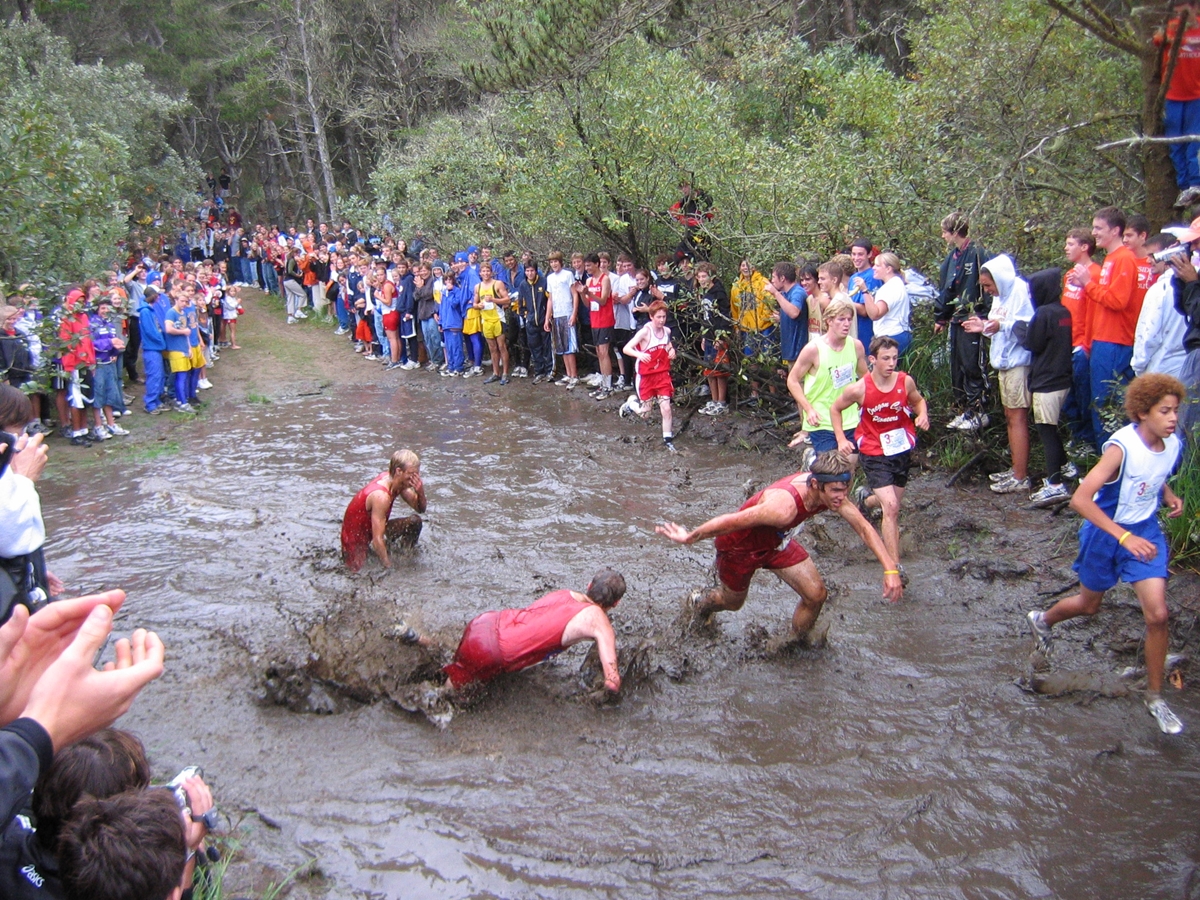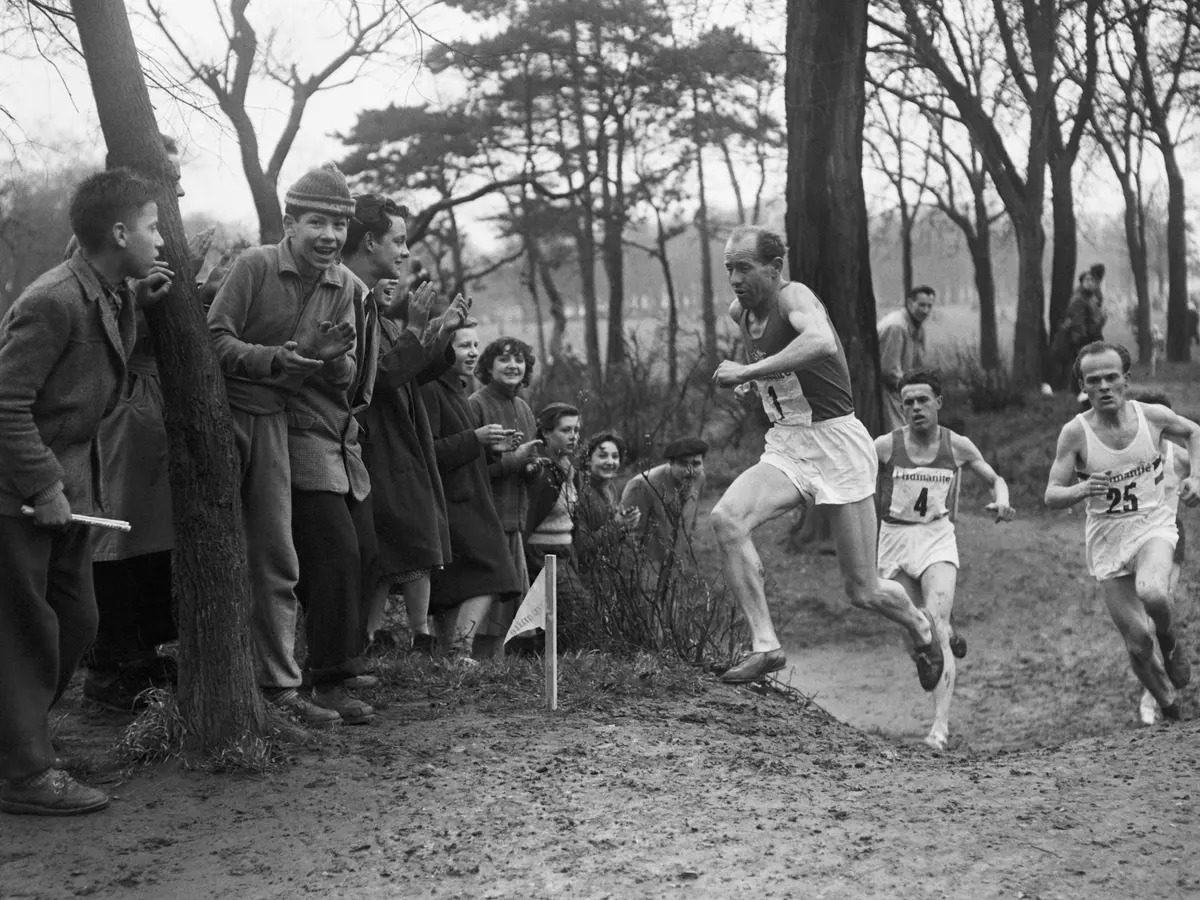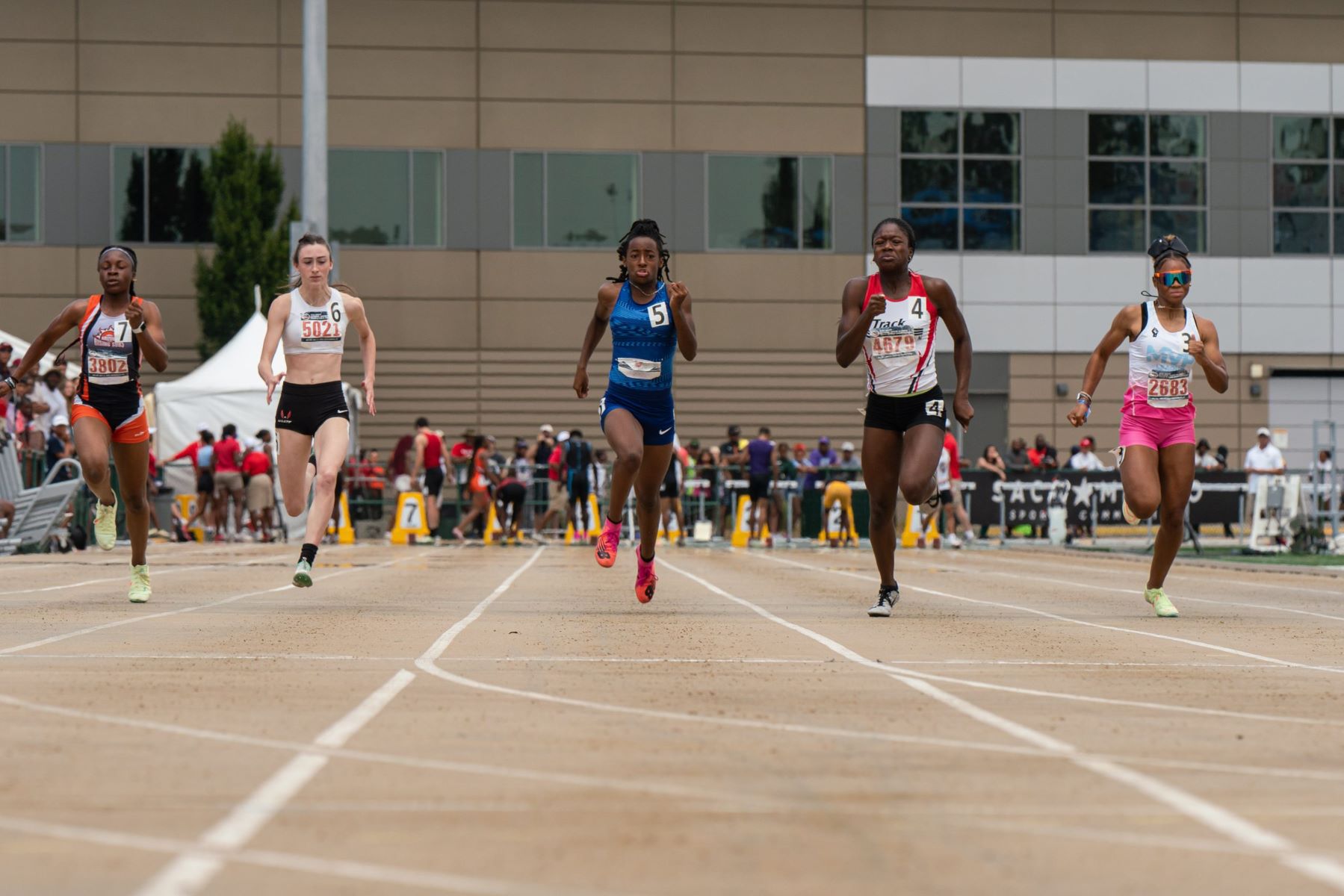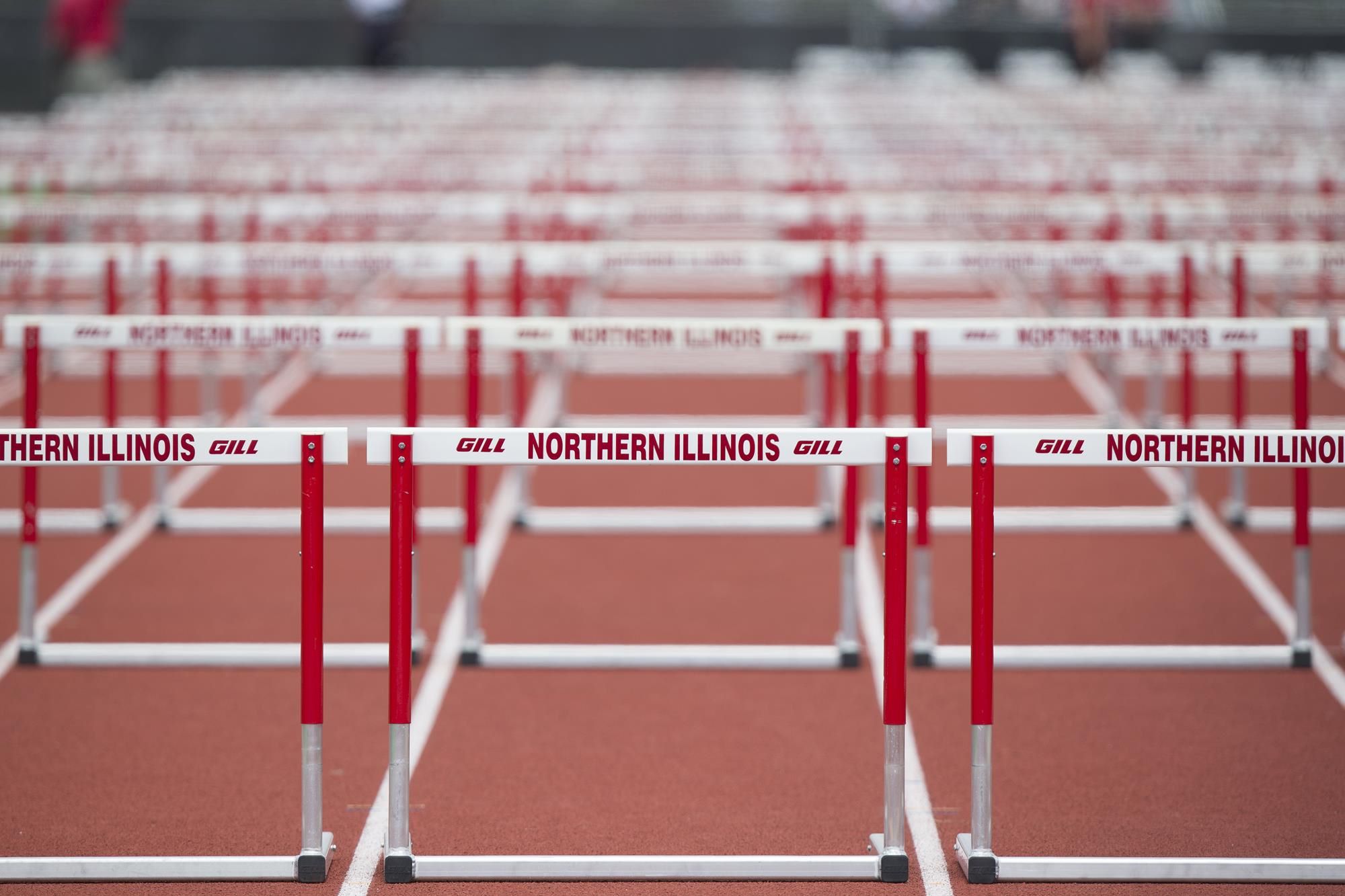Home>Misc>Featured>What Is A Track And Field Club In High School
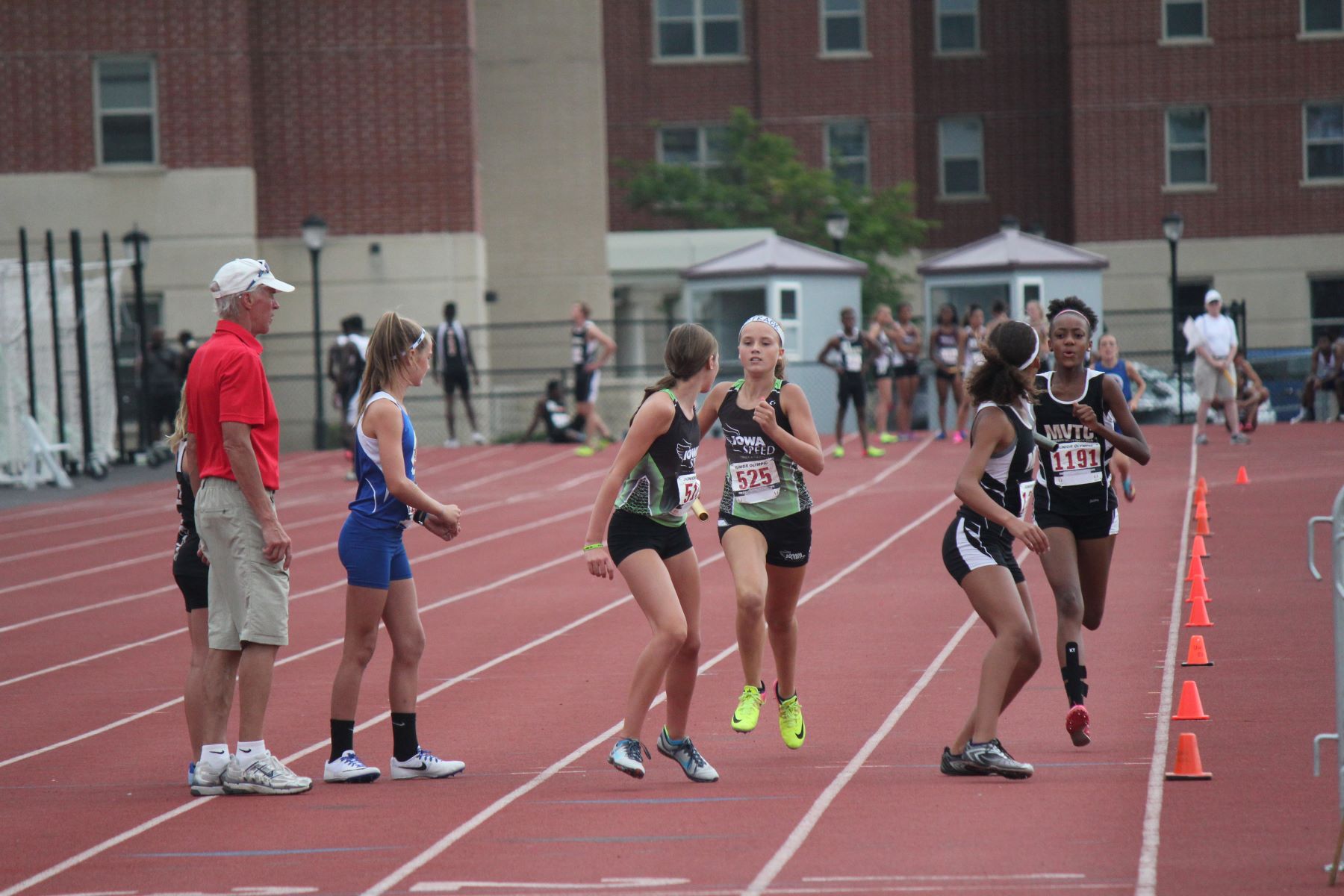

Featured
What Is A Track And Field Club In High School
Modified: January 2, 2024
Discover the benefits of joining a featured track and field club in high school. Build athletic skills, engage in friendly competition, and enhance your college application. Join today!
Introduction
Track and field clubs in high school have become increasingly popular among students who are looking to engage in athletic activities and showcase their skills. These clubs offer a wide range of events, training programs, and competitive opportunities, making them an attractive option for those with a passion for athletics.
Participating in track and field clubs not only provides students with physical fitness benefits but also offers numerous personal and social advantages. Joining a track and field club allows students to develop discipline, teamwork, and goal-setting skills, while also fostering a sense of camaraderie among teammates.
This article will explore the various benefits of joining a track and field club in high school, the different types of events that are available, the training and conditioning programs offered, the competitive opportunities for athletes, and the potential college opportunities that can arise from participating in these clubs. Whether you are a student looking to join a club or a parent seeking information about the benefits, this article will provide valuable insights into the world of high school track and field clubs.
Let’s dive into the exciting world of track and field clubs and discover why they are an excellent choice for high school students passionate about athletics.
Benefits of Joining a Track and Field Club in High School
Joining a track and field club in high school offers a multitude of benefits for students. Whether you are an aspiring athlete or simply looking to stay active and be part of a team, here are some of the key advantages of joining a track and field club:
- Physical Fitness: Participating in track and field events is a great way to improve overall fitness. Sprinting, jumping, and throwing activities help develop strength, speed, agility, and endurance, leading to enhanced physical health.
- Mental Well-being: Engaging in regular physical activity, such as track and field, releases endorphins, which are natural mood boosters. Being part of a club can also reduce stress, improve focus, and promote a positive mindset.
- Teamwork and Camaraderie: Track and field clubs foster a strong sense of camaraderie and promote teamwork. Athletes train together, support each other during competitions, and celebrate each other’s successes. These experiences build lasting friendships and teach essential collaboration skills.
- Goal Setting: Track and field clubs provide opportunities for athletes to set goals and work towards achieving them. Whether it’s improving personal records or qualifying for prestigious competitions, the process of setting and pursuing goals helps develop focus, determination, and a strong work ethic.
- Time Management and Discipline: Being part of a track and field club requires commitment and dedication. Athletes must balance their training and competition schedules with their academic responsibilities. This teaches them essential life skills, such as time management, discipline, and the importance of prioritizing tasks effectively.
- Scholarship Opportunities: Many universities and colleges offer scholarships specifically for track and field athletes. By excelling in high school track and field clubs, students can open doors to potential college scholarships and financial assistance.
- Character Development: Track and field clubs help shape athletes’ character. Through the challenges they face, such as overcoming setbacks, dealing with competition pressure, and pushing their limits, students develop resilience, perseverance, and a strong sense of self-belief.
These are just a few of the many benefits of joining a track and field club in high school. From physical fitness and mental well-being to teamwork and character development, participating in these clubs can have a profound positive impact on a student’s life.
Types of Track and Field Events
Track and field events in high school encompass a wide range of athletic disciplines that test various skills and abilities. Here are some of the main types of track and field events:
- Sprints: Sprint events include the 100m, 200m, and 400m races, which are all about explosive speed. Athletes compete to be the first to cross the finish line.
- Middle Distance: Middle distance events, such as the 800m and 1500m races, require a balance of speed and endurance. Athletes must pace themselves to maintain a strong performance throughout the distance.
- Long Distance: Long distance events include races like the 3000m and 5000m, which test athletes’ endurance and mental stamina. These events demand sustained effort and strategic pacing.
- Hurdles: Hurdle events involve athletes running and jumping over a series of hurdles. The standard events include the 100m and 400m hurdles, which require a combination of speed, agility, and technique.
- Relays: Relay races consist of teams of athletes passing a baton to each other in a specified order. The most common relays in high school track and field are the 4x100m and 4x400m relays, where team coordination and smooth baton exchanges are crucial.
- High Jump: The high jump event challenges athletes to clear a horizontal bar suspended at a certain height. Athletes must use proper technique to jump and clear the bar without knocking it down.
- Long Jump: In the long jump event, athletes sprint down a runway and then jump into a sandpit. The distance they achieve is measured from the takeoff point to the closest mark made in the sand.
- Triple Jump: Triple jump combines speed, technique, and coordination. Athletes perform a hop, a bound, and then a jump, with the distance measured from the takeoff point to the mark made in the sand.
- Shot Put: Shot put involves athletes throwing a heavy metal ball as far as possible. The distance is measured from the point of impact in a designated throwing area.
- Discus Throw: In the discus throw event, athletes spin and release a discus, a flat round plate-like object. The distance is measured from the point of impact in a designated throwing area.
These are just a few examples of the track and field events available in high school clubs. Each event requires different skills, techniques, and training methods. Athletes often choose to specialize in one or more events based on their strengths and interests. Whether an athlete prefers speed, endurance, or jumping and throwing, there is a track and field event that suits their abilities.
Training and Conditioning in High School Track and Field Clubs
Training and conditioning play a vital role in the success of high school track and field athletes. To excel in their chosen events, athletes must develop specific skills, improve their physical fitness, and optimize their performance. Here is a closer look at the training and conditioning aspects of high school track and field clubs:
Event-Specific Training: Each track and field event requires specific training techniques. Athletes receive specialized coaching to master the necessary skills, techniques, and strategies for their chosen events. Training sessions focus on improving speed, endurance, strength, flexibility, and technique to maximize performance.
Strength and Conditioning: A comprehensive strength and conditioning program is essential for track and field athletes. This includes exercises to build muscular strength, power, and endurance, as well as flexibility and mobility training. Athletes may engage in weightlifting, plyometric exercises, core strengthening, and circuit training to enhance their physical capabilities.
Speed and Agility: Speed is crucial in track and field events, and athletes undergo training programs designed to improve acceleration, top speed, and agility. Training methods may include interval training, sprint drills, speed endurance workouts, and ladder and cone agility drills.
Endurance Training: Long-distance runners and middle-distance athletes require extensive endurance training to improve their cardiovascular fitness and stamina. These training programs often involve long runs, tempo runs, fartlek training, and interval workouts to enhance aerobic capacity and endurance.
Technique Refinement: Refining technique and form is a critical aspect of track and field training. Athletes work closely with coaches to analyze and improve their running, jumping, or throwing techniques. Video analysis, drills, and feedback help athletes make adjustments and optimize their performance.
Recovery and Injury Prevention: Proper recovery and injury prevention strategies are emphasized in track and field clubs. Athletes are taught the importance of rest, nutrition, hydration, and sleep in their overall performance and injury prevention. Stretching, foam rolling, and mobility exercises are incorporated to maintain flexibility and prevent injuries.
Mental Preparation: Mental preparation is vital in track and field, and athletes are trained to develop a focused and positive mindset. Techniques such as visualization, goal setting, positive affirmations, and coping strategies for handling competition nerves are taught to athletes to enhance their mental toughness and resilience.
Periodization: Training programs in track and field clubs are often structured using periodization. This involves dividing the training year into specific phases, each with its own training goals and intensities. This systematic approach helps athletes peak at the right time for competitions and prevents burnout.
By combining event-specific training, strength and conditioning, technique refinement, recovery strategies, and mental preparation, high school track and field clubs provide athletes with the comprehensive training and conditioning they need to excel in their events.
Competitions and Meets for High School Track and Field Clubs
Competing in track and field meets is an exciting and integral part of being a member of a high school track and field club. These competitions provide athletes with the opportunity to showcase their skills, measure their progress, and gain valuable experience. Here’s an overview of the competitions and meets that high school track and field clubs participate in:
Inter-School Meets: High schools often organize meets where different track and field clubs compete against one another. These meets allow athletes to represent their schools and compete in a friendly and familiar environment. They encourage healthy rivalries and foster a sense of camaraderie among athletes from the same school.
Regional Meets: Regional meets bring together track and field clubs from a specific geographic area. Athletes compete against teams from other schools or districts, providing an opportunity to test their skills against a wider range of competitors. Regional meets serve as qualifiers for higher-level competitions.
Provincial/State Championships: Provincial or state championships are the pinnacle of high school track and field competitions within a specific region. Athletes who perform well in regional meets may earn the right to compete in these prestigious events. Provincial or state championships often attract top athletes and serve as a platform to qualify for national-level competitions.
National Championships: National championships bring together elite high school track and field athletes from across the country. These competitions showcase the highest level of talent and offer opportunities for athletes to earn recognition and scholarships. National championships are hotbeds for college recruiters looking to recruit talented athletes.
Invitational Meets: Invitational meets are high-level competitions where participating track and field clubs receive invitations to compete. These meets attract top athletes and provide a competitive and challenging environment. Invitational meets often feature renowned athletes and serve as a platform to set personal bests and gain exposure.
Post-Season Meets: After the regular season and championship meets, some track and field clubs may have the opportunity to participate in post-season meets. These meets are reserved for top-performing athletes who have demonstrated exceptional skills and potentials. They provide additional competitive opportunities and allow athletes to further showcase their abilities.
Participating in competitions and meets is not only about individual performance but also about contributing to the overall success of the track and field club. Athletes accumulate points for their team, fostering a sense of team spirit and camaraderie. Competitions offer opportunities for athletes to set personal records, achieve qualifying standards for higher-level meets, and gain exposure to college recruiters.
Whether it’s a local meet or a national championship, participating in track and field competitions allows athletes to push their limits, gain valuable experience, and grow as athletes and individuals.
College Opportunities for Track and Field Club Athletes in High School
For high school track and field club athletes, participating in the sport can open doors to exciting college opportunities. Colleges and universities across the country actively recruit talented track and field athletes, offering scholarships, athletic programs, and the chance to compete at the collegiate level. Here are some of the college opportunities available for track and field club athletes:
College Scholarships: Many universities and colleges provide scholarships specifically for track and field athletes. These scholarships can significantly offset the cost of tuition and other expenses. Track and field athletes who have excelled in their high school clubs, achieved impressive performances, and showcased potential may be eligible for scholarship opportunities.
Collegiate Athletic Programs: Joining a college track and field team allows athletes to continue their training and compete at a higher level. Collegiate athletic programs provide access to professional coaching, state-of-the-art facilities, and resources dedicated to developing athletes’ potential. Athletes can benefit from advanced training techniques, specialized support staff, and the opportunity to compete against top-tier athletes.
College Meets and Competitions: College track and field athletes have the opportunity to compete in prestigious college meets and competitions. These events attract top athletes from various collegiate programs and offer a platform for showcasing skills, setting personal records, and gaining recognition. Competing at the college level provides valuable experience and exposure to professional and international scouts.
Networking and Exposure: Being a part of a college track and field program exposes athletes to a wider network of coaches, teammates, and professionals in the field. College coaches have extensive connections and can provide guidance and exposure for athletes looking to compete at higher levels, such as national and international competitions. Networking opportunities may also arise through alumni networks and connections within the track and field community.
Career Opportunities: Track and field can lead to career opportunities beyond competing. Athletes who excel in their college track and field careers may pursue careers as coaches, sports trainers, fitness professionals, or physical education teachers. It opens up possibilities for involvement in the sports industry and contributes to a lifelong passion for athletics.
Personal and Skill Development: College track and field programs provide a supportive environment for personal and skill development. Athletes learn valuable life skills such as time management, discipline, teamwork, and resilience. They also gain an understanding of the importance of maintaining a healthy lifestyle and physical fitness.
It’s important for high school track and field club athletes to leverage their accomplishments, maintain strong academic performance, and actively engage with college recruiters and coaches. By showcasing their skills, achievements, and potential, these athletes can make the most of the college opportunities available and potentially secure a bright future in track and field.
Conclusion
Track and field clubs in high school offer numerous benefits to students who have a passion for athletics. Joining a track and field club provides physical fitness benefits, promotes mental and emotional well-being, and encourages teamwork and camaraderie. These clubs also foster goal-setting skills, time management, discipline, and character development. Moreover, participating in track and field clubs opens up exciting college opportunities, including scholarships, collegiate athletic programs, and career pathways in the sports industry.
High school track and field clubs offer a variety of events that cater to athletes with different skills and abilities. From sprints and hurdles to jumps and throws, there is an event to suit various strengths and interests. Specialized training and conditioning programs are designed to enhance athletes’ performance and develop the specific skills required for their chosen events. Track and field clubs also offer opportunities for athletes to compete in various competitions, including inter-school meets, regional meets, and national championships. These competitions allow athletes to measure their progress, gain experience, and potentially qualify for higher-level meets.
For track and field club athletes, the journey does not end in high school. There are exciting college opportunities available, including scholarships, collegiate athletic programs, and the chance to compete in college meets and competitions. These opportunities provide exposure, networking, and potential career pathways in the sports industry. College track and field programs also emphasize personal and skill development, helping athletes grow not only in the sport but also in life.
Whether an athlete is fueled by the desire to excel, stay active, or pursue collegiate opportunities, joining a track and field club in high school can be a rewarding and fulfilling experience. It offers much more than just physical fitness; it fosters personal growth, cultivates important life skills, and opens doors to exciting opportunities in both athletics and beyond. So, lace up your shoes, hone your skills, and embark on an incredible journey with a high school track and field club.
